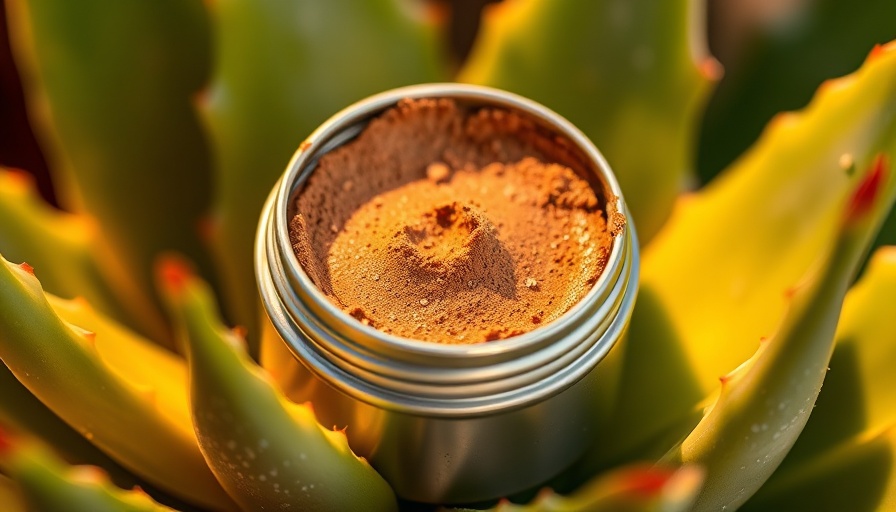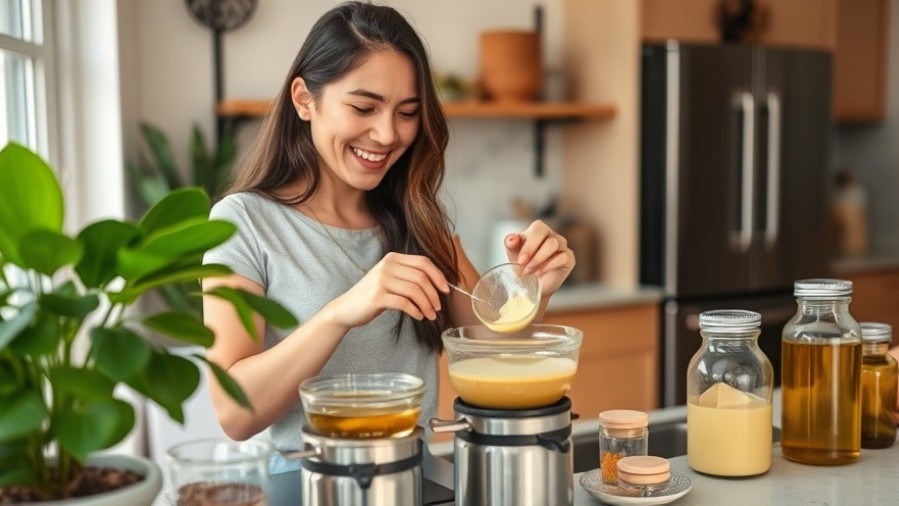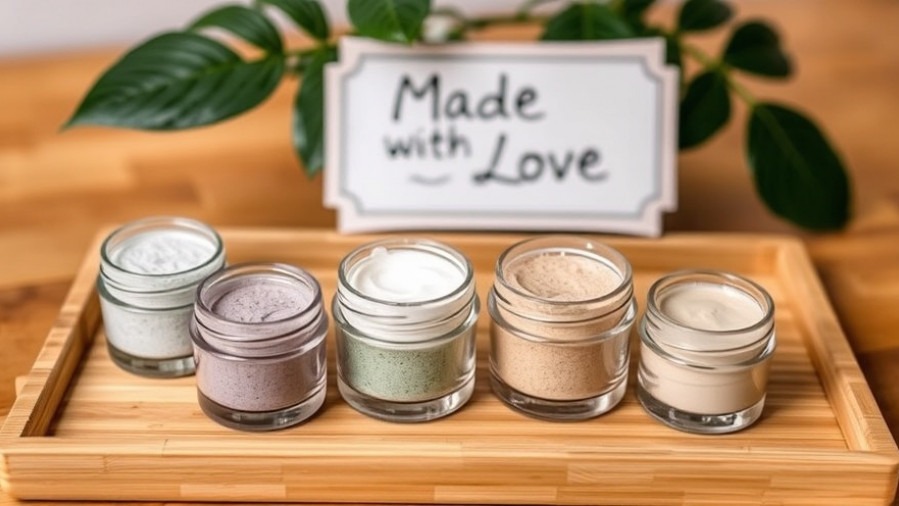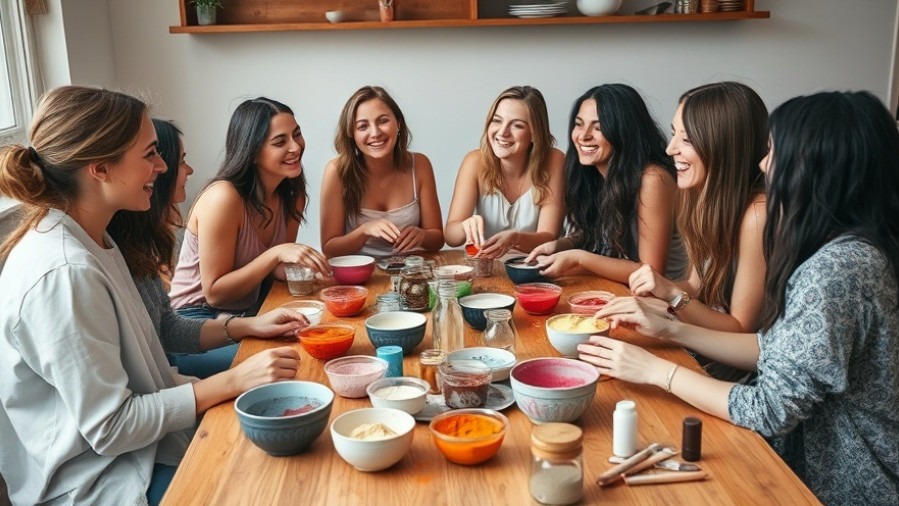
Creating Beauty Sustainably: Discovering DIY Cream Eyeshadow
In an age when beauty aisles are overflowing with products that promise everything from all-day wear to instant radiance, many consumers are beginning to question what’s really inside those tiny jars and tubes. Are they safe for our skin? Are they kind to the planet?
And do they really need to cost a small fortune?
For a growing number of eco-minded beauty lovers, the answer is clear: it’s time to take beauty into your own hands—literally.
Crafting your own makeup allows you to express creativity while reducing waste and gaining control over the ingredients you apply to your skin.
One of the most delightful and rewarding projects to start with is DIY cream eyeshadow—a natural, customizable, and wallet-friendly way to add color and care to your everyday look.
Why Homemade Makeup Is Making a Comeback
Homemade beauty isn’t just a trend; it’s a return to simplicity. Many commercial cream eyeshadows contain fillers, artificial colors, or preservatives that can irritate the delicate skin around the eyes.
Some even include synthetic fragrances or microplastics that aren’t biodegradable, contributing to environmental waste.
Experts in clean beauty and cosmetic formulation note that today’s consumers are looking for transparency and control. When you make your own makeup, you know exactly what’s in it—and what isn’t.
It’s not only a healthier option for your skin but also an empowering way to participate in the growing sustainable beauty movement.
Beyond health and safety, there’s the financial benefit. A single pot of name-brand cream eyeshadow can cost anywhere between $15 and $35—or more for luxury lines.
By contrast, a homemade batch costs roughly $1 per container, depending on your ingredients and shades. That leaves room for experimentation and creativity without the guilt of overspending.

Your Pantry, Your Palette: The Ingredients that Work Magic
What makes DIY beauty so rewarding is how accessible it is. You don’t need fancy lab equipment—just a few nourishing ingredients that might already be in your home or easily found at a local natural foods store.
Shea Butter: Adds moisture and creaminess to the formula while nourishing the eyelid skin.
Arrowroot Powder: Provides a silky, velvety finish and helps balance oil for smoother blending.
Jojoba Oil: A lightweight, non-greasy oil that mimics natural skin sebum and helps the product glide on effortlessly.
Beeswax or Candelilla Wax: Helps the shadow solidify while giving it staying power. (Candelilla wax is the vegan-friendly option.)
Mica Powder: Offers color and shimmer; available in a wide range of natural shades.
Vitamin E Oil: Extends the product’s shelf life and provides gentle antioxidant benefits.
Most of these ingredients can be found locally in Sacramento at places like Refill Madness, The Natural Foods Co-op, or Whole Foods Market, where you can bring your own containers for a zero-waste experience.
How to Make Your Own Cream Eyeshadow
Creating this eco-chic product takes less time than a morning coffee run. Here’s how:
Melt the base: Combine 1 teaspoon shea butter, 1 teaspoon beeswax or candelilla wax, and 1 teaspoon jojoba oil in a double boiler or heat-safe bowl over simmering water.
Mix to perfection: Once the blend is smooth, remove from heat and stir in 1 teaspoon arrowroot powder for texture.
Add your color: Mix in mica powder until you reach your desired shade and intensity.
Finish and cool: Pour the mixture into a small glass jar or tin and let it cool for about an hour.
Apply and admire: Use a clean fingertip or brush. Layer for more intensity or keep it subtle for a natural glow.
Pro Tip: Always do a quick patch test on your inner arm before applying any new product to your face, especially if you have sensitive skin. Store your cream eyeshadow in a cool, dry place, and use it within three to six months for best results.

Why DIY Beauty Is Good for the Planet (and You)
The beauty industry produces millions of plastic containers each year, many of which can’t be properly recycled because of mixed materials or product residue. By reusing small jars or tins for your DIY eyeshadow, you’re instantly reducing that waste.
Sustainability experts often point out that homemade cosmetics are one of the easiest entry points into eco-friendly living.
It’s not just about avoiding plastic waste—it’s about reconnecting with the process of making something by hand and appreciating how simple changes can lead to meaningful impact.
DIY beauty also means you control your supply chain. You can buy ingredients in bulk, choose organic or fair-trade options, and even experiment with locally produced materials like Sacramento’s regional beeswax or small-batch herbal oils from community markets.
Adding Personality to Every Shade
One of the joys of making your own eyeshadow is personalization. Want a soft shimmer for daytime wear? Try pearl mica with a touch of cocoa powder for a warm nude.
Feeling bold? Combine amethyst mica with a dash of activated charcoal for a smoky, mysterious tone.
You can even create limited-edition seasonal shades—golden bronze for summer, rose-gold for spring, or forest green for fall.
Sacramento’s creative community often embraces this hands-on approach at local workshops and pop-up events where beauty enthusiasts share recipes, tips, and techniques.
The Social Side of Sustainability
Making your own makeup doesn’t have to be a solo project. Consider hosting a DIY beauty night with friends. Bring ingredients to share, exchange color blends, and help each other fill tins and jars.
Everyone goes home with their own custom shade, wrapped in an eco-friendly container.
These gatherings have a way of sparking bigger conversations about conscious living and mindful consumption. They remind us that sustainable choices can also be joyful, social, and expressive.

Inspiring a Cleaner, Kinder Makeup Routine
Transitioning to homemade makeup doesn’t have to be an all-or-nothing move. Start with one simple product—like cream eyeshadow—and gradually explore other DIY creations such as lip balms, blushes, or natural highlighters. Each swap helps reduce packaging waste and removes unnecessary chemicals from your beauty routine.
Many DIY beauty enthusiasts agree that once you experience the satisfaction of making your own products, it becomes a creative ritual that deepens your connection to self-care and sustainability alike.
Conclusion: Shine Naturally, Inside and Out
Sustainability in beauty isn’t about perfection—it’s about progress. Making your own cream eyeshadow is a small yet meaningful act that blends creativity, self-care, and environmental awareness. Each pot you create reflects not just your style, but your values.
So gather your ingredients, invite a friend or two, and let your imagination lead the way. Your eyelids will sparkle—and so will your conscience.
DIY Safety & Sustainability Notes
Perform a patch test before first use.
Use cosmetic-grade mica only (avoid craft mica).
Store in a clean, airtight container and use within 3–6 months.
Avoid introducing moisture into the jar to extend shelf life.
Reuse containers whenever possible to minimize waste.
Want simple ways to live greener every day? Explore Eco Living for local sustainability ideas and planet-friendly tips, then head back to Sacramento Living Well for more inspiration across our community.
---
Authored by the Sacramento Living Well Editorial Team — a publication of DSA Digital Media, dedicated to highlighting wellness, local living, and inspiring community stories throughout Greater Sacramento.
 Add Row
Add Row  Add
Add 





Write A Comment